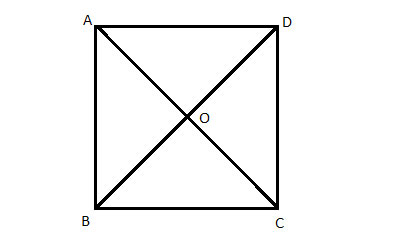A common and easy geometry problem is to find the side of a square from its diagonal. In another problem, we did the opposite - we found the length of the diagonal of a square from its side. We saw that if we label the diagonal D and the side of the square a, then |D| = a ·√2.
From that, it is clear the if we have D and want to find a, then a= |D|/√2, or, if we multiply the denominator and numerator of the fraction by √2, a= ·√2·|D|/2. This is the more common way to represent our answer, as it is considered better form to not leave any radical signs in the denominator. Removing the radicals from the denominator is called the "canonical form".
But here, we will derive this formula from the beginning, assuming we hadn't already done the opposite problem.
Problem
ABCD is a square, with diagonal AC measuring D units. Find the length of the side of the square from its diagonal.

Strategy
We will follow the same strategy we used when we found the length of the diagonal from the length of the side: The angles of the square are all 90°, so the triangle formed by the diagonals with the sides (e.g.: ΔACB) is a right triangle.
Both legs of each one of the triangles are sides of the square, and they are equal. This is what we want to find. Let's label each of these sides ‘a’. Now, since ΔACB is a right triangle, AC is the hypotenuse, and its length is known - it is D. We can use the Pythagorean theorem to find the length of the ides from the length of the hypotenuse.
Proof
(1) ABCD is a square //Given
(2) ∠ABC = 90° //definition of a square
(3) AB=BC=’a’ //given, definition of a square
(4) AC2=a2+a2 //(2),(3), Pythagorean theorem
(5) AC2=2a2
(6) a2 = AC2/2
(7) a = AC/√2 //Take the square root of both sides
(8) a= ·√2·D/2 //multiply numerator and denominator by √2 to get canonical form
Having done that, let's look at a numerical example: Find the length of a square when its diagonal is 12. So, D=12, and from the above , a= ·√2·D/2 = √2·12/2 = √2·6.
